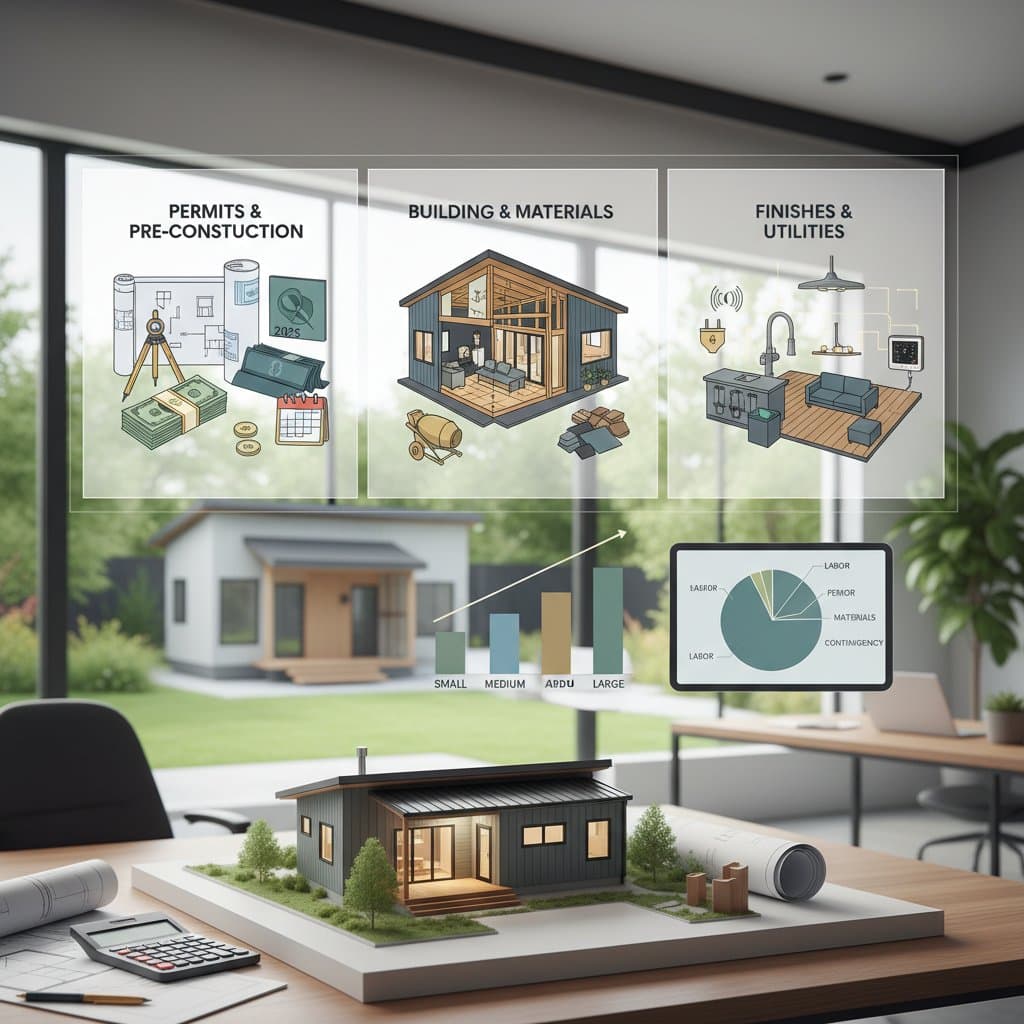Climate-Resilient Home Building: 2025 Standards
Building a home that withstands evolving weather patterns demands careful selection of designs, materials, and construction techniques. Climate-resilient standards produce structures that endure longer, function more effectively, and shield owners from environmental pressures. This guide details these standards and shows how to incorporate them into new builds or existing home improvements.
Understanding Climate-Resilient Construction
Climate-resilient building integrates robust materials and intelligent designs to minimize risks from severe weather. It prioritizes energy conservation, water control, and sustained strength. These approaches enhance safety, cut ongoing maintenance expenses, and improve interior comfort.
Builders achieve balance by evaluating how structures respond to temperature extremes, humidity, and strong winds. Standards vary by region, as a design suited for humid coastal areas may not suit arid deserts or snowy mountains. Professionals assess local climate data to tailor solutions that maintain both functionality and aesthetic appeal.
Essential Components of Climate-Resilient Standards
Durable Exterior Materials
Resilient homes feature exteriors built with materials that resist weathering over decades. Options include fiber cement siding, engineered wood panels, and metal roofing, which all excel in harsh conditions. Brick and stucco provide additional strength when supported by effective drainage.
These materials prevent common issues like cracking or rot, extending the home's lifespan and reducing repair frequency. For instance, pair fiber cement with aluminum trim to create a modern facade that withstands high winds, or combine metal roofing with stone veneer for rustic durability in varied climates. In coastal regions, fiber cement boards resist salt corrosion, while mountain properties benefit from stone that handles freeze-thaw cycles.
Advanced Roofing Systems for Weather Protection
The roof serves as the primary barrier against elements, so standards recommend impact-resistant shingles, standing seam metal, or reinforced tiles. Add waterproof underlayment and proper flashing to seal vulnerabilities.
Such systems block leaks and minimize storm-related damage, potentially saving thousands in repairs. Select darker shingles with lighter siding to manage heat absorption in sunny areas, or apply reflective coatings for better energy performance in warmer zones. Ranch homes often incorporate metal roofing for its longevity on gentle slopes, while colonial styles use layered shingles that replicate traditional slate appearance.
Superior Insulation and Window Solutions
Maintaining consistent indoor temperatures eases the load on HVAC systems and lowers energy costs. High-R-value insulation and multi-pane windows with gas fills form the backbone of these standards.
Effective insulation retains heated or cooled air and eliminates drafts, leading to utility savings of up to 20 percent annually. Combine low-E glass with subtle trim for a clean look, and install vapor barriers to enhance moisture resistance. Modern homes with expansive glass walls use advanced glazing that blocks UV rays while maximizing daylight, creating bright, efficient spaces.
Strategic Moisture Management and Drainage
Water damage poses a major risk to structural integrity, so standards focus on site grading, efficient gutters, and breathable landscapes. Ventilated wall systems allow quick drying after precipitation.
Proper planning averts mold growth, wood decay, and foundation erosion, preserving the home's value. Integrate stone accents with generous roof overhangs to divert rain, or add subsurface drains near brick bases for comprehensive protection. Craftsman designs leverage broad eaves to shield exteriors in rainy climates, while desert homes employ channeled stucco to handle rare but intense storms.
Reinforcement Against Wind and Seismic Forces
In storm-prone or earthquake-vulnerable areas, added bracing, anchor bolts, and shatter-resistant glazing strengthen the structure. These elements distribute forces evenly during events.
Reinforced designs endure extreme pressures, decreasing the need for post-event fixes and enhancing safety. Opt for impact glass with sleek metal frames for contemporary appeal, or blend reinforced beams with wood siding for natural warmth. Coastal dwellings frequently include hurricane-rated shutters and bolted foundations, while sloped sites use embedded steel ties to secure against shifts.
Actionable Design Strategies
Select light exterior colors to deflect solar heat in warm regions, or darker shades to capture warmth in cooler ones, always factoring in local weather patterns. Neutral undertones, such as soft grays or warm beiges, complement various materials and adapt to changing light conditions.
Plan for low-maintenance finishes like pre-painted siding or powder-coated metals that resist chipping and fading for years. Homeowners can handle simple tasks, such as applying sealants or minor grading adjustments, but engage experts for complex work like roof installations or structural upgrades to ensure compliance and quality.
Evaluating Costs and Benefits
Initial investments in resilient features often exceed standard options, yet they yield substantial savings through reduced maintenance and energy use. A premium metal roof, for example, might add 10 to 20 percent to upfront costs but last 50 years with minimal upkeep, avoiding frequent replacements. Energy-efficient upgrades can recoup expenses in five to seven years via lower bills, making them practical for long-term ownership.
Frequently Asked Questions
How should I select trim colors for a resilient exterior?
Choose trims that offer subtle contrast to define architectural lines, or select matching tones for a cohesive, minimalist aesthetic that withstands weathering.
Can exterior colors influence home resale value?
Neutral choices like taupe or light gray broaden appeal and maintain vibrancy across climates, often boosting marketability.
Do these standards apply only to new constructions?
Existing homes can adopt many elements through targeted renovations, including siding replacements, insulation enhancements, or drainage improvements.
Final Insights
Climate-resilient building creates homes that thrive amid environmental changes, blending durability with everyday livability. Homeowners who invest in these standards secure properties that demand less maintenance, consume fewer resources, and retain value over time. Critchfield Construction applies this expertise to deliver customized solutions that protect investments while enhancing comfort and style.










